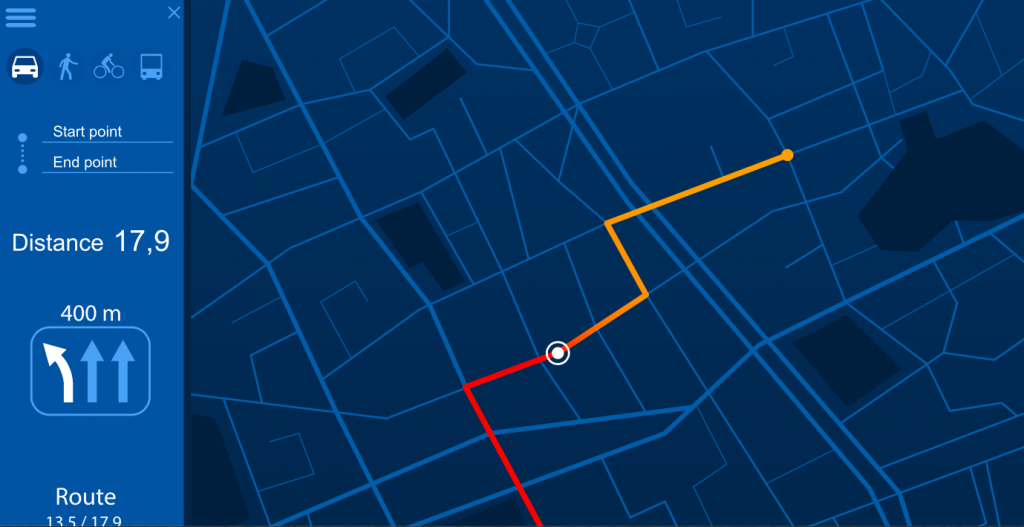Freight, Logistics and Warehousing
Fighting Freight Crime
Ten billion rand. That’s a lot of money. It’s about 0.15 per cent of our country’s GDP. It’s also just one estimate of how much freight crime could be costing the economy per year. It’s not a problem that’s going away any time soon. South Africa’s criminals are full of drive, ideas, determination and the sort of entrepreneurial spirit this country really needs more among honest folk.
So what can you do? The first thing is to be aware.
Popular targets
“Electronics are one of the major targets – specifically cellphones and laptops,” says Andre Du Venage, CEO of Secure Logistics. He says grocery consumables are also targets, and highvalue commodities like gold and diamonds, but electronics are at greatest risk.
According to Du Venage, the N3 from Durban to Johannesburg is the busiest route for road cargo, and thus also the one that gets hit the most – specifically the stretch between Villiers and Johannesburg. “This tells us that the people who receive these goods are around the Johannesburg area, distributing the goods out of the country or to local shops.”
Du Venage says that despite this being common knowledge, not enough arrests are made by police. “You never hear about the police expanding their network, training more policemen to be specialist investigators in the field of truck hijacking and cargo crimes. Around 2000, the police’s specialised freight unit was disbanded. An experienced detective from the unit was meant to be placed in each police station, but this never happened.”
During this time, a lot of knowledgeable people left the police force to operate privately. This means that while there is plenty of expertise available to companies, these people tend to operate in silos. “Companies don’t talk to each other about crime because they don’t want to look bad, and they don’t trust anybody,” says Du Venage.
Because of this, freight movers don’t have a full picture of what’s happening with regards to crime. The Transport Asset Protection Association (TAPA) – a multinational organisation working to reduce cargo losses in the supply chain – has called for greater industry collaboration in South Africa to address freight crime. “Sadly, even as the human tragedy of COVID-19 is unfolding across the globe, criminals are continuing to attack supply chains, including those delivering life-saving medical supplies,” says Thorsten Neumann, TAPA president and CEO of Europe, the Middle East and Africa. “It reminds us of what we already know: cargo crime never stops. This is why TAPA never stops. And I know with confidence that the TAPA family is here also for any member that needs a little extra help or advice, especially at this time when the world is relying on supply-chain resilience more than ever before.”
Being prepared
Route planning, driver compliance and smart use of technology are all crucial components of preventing and addressing freight crime. “You need to take certain controls away from the driver,” says Du Venage. “They must be prevented from immobilising the vehicle. If they divert from the route, there should be an immediate response.”
Marcus Ellappan, Bidvest International Logistics head of transport, says the company has a number of such measures in place to protect their cargo. “We compile and review route risk assessments frequently – this assists drivers with the routes they need to travel,” says Ellappan. “There are no-go zones recorded on our system, which sends out alerts to our risk department in the event of vehicles travelling out of route. Drivers travel in convoy where possible, and our security partners are on alert when vehicles are travelling high-risk routes, which enables faster response times in the event of an attempted hijacking.”
Bidvest also engages technology to monitor and respond. “Our trucks have dual CCTV cameras fitted to assist with investigations and warnings in the event of exceptions taking place,” explains Ellappan. “Radio frequency identification (RFID) locks are used for high-value commodities – these send out alerts if they are tampered with. The locks also have tracking devices fitted.”
Handling hijacking
While opportunistic crime remains rife – last year, the Road Freight Association reported a disturbing increase in the number of trucks being hit by rocks flung from the bridges or the roadside – many truck hijacking syndicates operate with ruthless, military precision.
It is difficult, if not impossible, to protect a shipment adequately, says Du Venage, as criminals can field vastly superior numbers and firepower compared to any armed escort. “The days of the traditional armed escort are numbered. If you watch the N3 coming into Gauteng and want to identify the trucks with valuable goods, look for the escort vehicles driving behind them. This is an open advertisement. The correct way is to have surveillance officers who know how to blend in.”
These surveillance officers are crucial to your response time – and it’s your response that really counts. “You need to use a combination of manpower and technology in such a way that the criminals become the target,” says Du Venage. “That’s only going to come with proper policies, procedures and expertise. You can’t control the truck being hijacked; you can control access to, and movement of, the truck.”
Du Venage says that it’s impractical to wait for police response, but that on the occasion that they can assist aerially, it has a big impact. “You have to have armed ground and air support. Hijackers don’t want to stick around unless they have control of the truck. If they have control, they’ll do their utmost to protect that. The moment they see there’s an armed response they’ll try to get the truck off the main road and disengage the tracking unit.”
Having witnessed two armed hijackings while on escort duty, Du Venage can attest to the power of a fast and effective response. “The first hijacking, we followed the hijackers for 20km because we wanted to catch them – and we nearly did,” he says. “The second time we managed to arrest two hijackers. If your systems are designed for immediate, effective response, then the criminals become scared. You must put fear into their hearts.” The results speak for themselves – since the second incident, the company hasn’t been targeted again.






 Sign-up and receive the Business Media MAGS newsletter OR SA Mining newsletter straight to your inbox.
Sign-up and receive the Business Media MAGS newsletter OR SA Mining newsletter straight to your inbox.